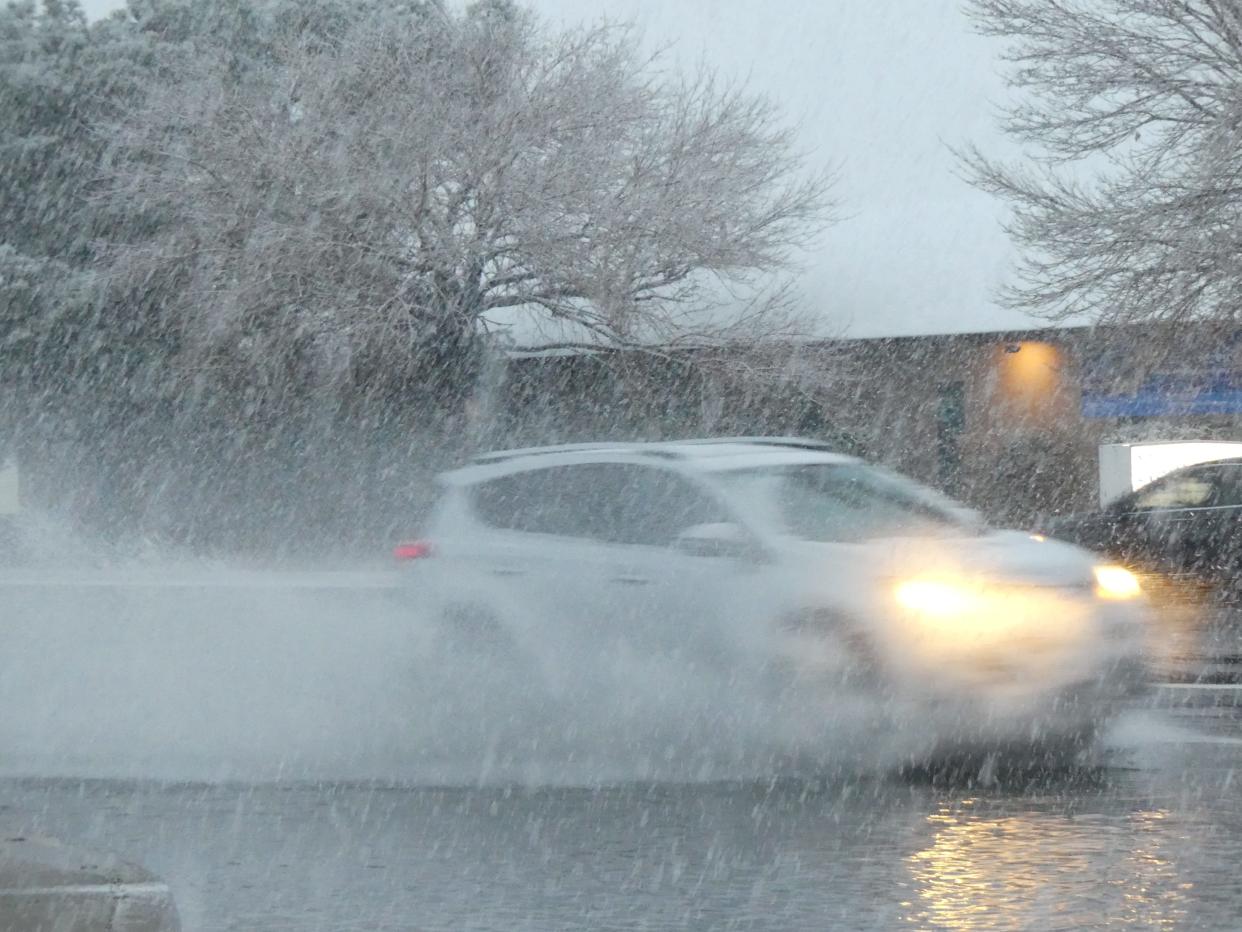White House approves disaster relief to San Bernardino County

- Oops!Something went wrong.Please try again later.
The Federal Emergency Management Agency on Friday announced that federal disaster assistance has been made available for areas in California that battle emergency weather conditions, such as the mountains of San Bernardino County.
The assistance, which began on Thursday, supplements state, tribal, and local response efforts due to emergency conditions resulting from severe winter storms, flooding, landslides, and mudslides.
Rep. Jay Obernolte, R-Hesperia, who represents many mountain communities and lives in the Big Bear areas, took to Twitter on Friday.
“I had a productive call with @FEMA_Deanne earlier today to discuss approval & delivery of federal disaster aid to our mountain communities,” Obernolte posted. “I appreciate @POTUS' expeditious approval of Gov. Newsom's request!”
The President’s action authorizes FEMA to coordinate all disaster relief efforts to alleviate hardship and suffering caused by the emergency on the local population of several counties.
Additionally, to provide appropriate assistance to save lives, protect property and safety and lessen or avert the threat of a catastrophe in the counties, which include:
Amador.
Butte.
El Dorado.
Fresno.
Humboldt.
Imperial.
Inyo.
Kern.
Lake.
Los Angeles.
Madera.
Mariposa.
Mendocino.
Merced.
Mono.
Monterey.
Napa.
Nevada.
Placer.
Plumas.
Sacramento.
San Bernardino.
San Francisco.
San Mateo.
San Luis Obispo.
Santa Barbara.
Santa Clara.
Santa Cruz.
Sierra.
Sonoma.
Stanislaus.
Tulare.
Tuolumne.
Yuba.
State of emergency declared
The federal response comes nearly 10 days after SBC officials on Feb. 27 declared a local emergency after many San Bernardino Mountain residents found themselves trapped at home or unable to reach their homes due to several feet of snow that fell nearly a week.
On March 1, Gov. Gavin Newsom proclaimed a state of emergency to support and fund disaster response and relief in SBC and a dozen other counties.
Newsom also activated the State Operations Center to bring higher-level support to county-led emergency response efforts and coordinate mutual aid from neighboring jurisdictions, especially in SBC.
FEMA mobilizes help
FEMA is authorized to identify, mobilize and provide, at its discretion, equipment, and resources necessary to alleviate the impacts of the emergency.
Emergency protective measures limited to direct federal assistance under the public assistance program will be provided at 75% federal funding.
Andrew F. Grant has been named the Federal Coordinating Officer for federal recovery operations in the affected areas.
FEMA spokesperson Robert Barker cautioned that the declaration means the state and federal agencies have taken a precautionary measure, which doesn’t mean residents should expect federal assistance now.
Unlike a disaster declaration, this declaration is more of a gesture and involves several more steps before help can be requested.
“California is so well resourced already,” Barker said. “They very infrequently need help… I can’t think of a time they requested additional resources.”
Snowmelt and flooding warnings issued
A flood watch was in effect for Friday in the snow-packed San Bernardino and Riverside county mountains, the National Weather Service reported.
Snow levels through Friday night in the Inland Empire were around the 10,000-foot level and dropping to 7,500 and 8,000 on Saturday morning.
A limited supply of sandbags will be available at various fire stations. For locations and more information, visit snowinfo.sbcounty.gov.
The atmospheric river, the Pineapple Express, began moving into California on Thursday night, causing flooding and road closures throughout the state, mostly in central and northern counties.
A flash flood warning continued on Friday in many counties, including San Luis Obispo, Atascadero, and Arroyo Grande, the National Weather Service reported.
In Santa Clara County, southbound Highway 101 in Gilroy was shut down Friday after floodwaters from Uvas Creek spilled over the roadway.
On Thursday, flooded roadways, toppled trees, and power outages were reported in Kern County and other areas of California.
Kern County officials issued an evacuation order for the low-lying areas of Kernville and Riverkern, as well as Tillie Creek and Wofford Heights.
Caltrans has about 4,000 crew members working 12-hour shifts during the storm. Many have already removed downed trees and cleared drainage culverts to minimize flooding, Deputy Director John McKeever said.
The California National Guard reported deploying nearly 40 high-water vehicles to respond to rescues.
Three elderly women in Fresno County, including a 104-year-old, were rescued after being stranded in a home, Fresno County Sheriff John Zanoni said.
By Friday afternoon, floodwaters in the county had “risen considerably,” and an evacuation order was issued for all residents, according to the sheriff’s office.
Weather experts expect that some areas of the Sierra Nevada above 8,000 feet could receive 8 feet of snow.
Daily Press reporter Rene Ray De La Cruz may be reached at 760-951-6227 or RDeLaCruz@VVDailyPress.com. Follow him on Twitter @DP_ReneDeLaCruz.
This article originally appeared on Victorville Daily Press: White House approves disaster relief to San Bernardino County

